The Urban Development Institute of Australia National welcomes the Labor party’s newly announced suite of policies to help Australians into their own home and the critical measures designed to boost supply.The Labor party’s Help to Buy scheme will provide 10,000 families each year with homes partly funded by the Federal Government, (up to 40% for new homes and 30% for existing homes), with a 2% deposit and no mortgage insurance.“The scheme will help in-need Australians to find a pathway into a safe home, especially those in life transition like older women, divorcees and people fleeing unstable domestic environments,” said Maxwell Shifman UDIA National President.“It is critical that the detail of the initiative also has safeguards to ensure participating Australians do not find themselves without a home or in financial stress as a result of interest rates rises or economic changes,” he added.The seismic policy change however, is an expanded role for the National Housing Finance and Investment Corporation (NHFIC) to include a new National Housing Supply and Affordability Council that will set targets, collect, monitor and report on housing supply and land use.NHFIC will be renamed Housing Australia and will also report on critical data including volume and price of land, material costs, enabling infrastructure and time taken in approvals and planning.UDIA National has been calling on all political leaders to adopt an expanded role for NHFIC, and these measures are a critical step to making sure we boost housing supply to rebalance housing affordability.Continually declining housing supply has pushed prices further out of reach for ordinary Australians and simply trying to limit demand will have far-reaching economic and social consequences.In 2022 greenfield lot delivery could plummet by 43% due to lack of supply, and this will simply leave more Australians without a home while pushing prices up still further.Worse still, NHFIC predicts a national annual housing shortfall of around 20,000 by 2025, and 727,000 social/affordable dwellings will be required over the 20-year period 2016-2036. The issue has often been caused by relatively straightforward problems with limited development ready land, planning delays, approvals, lack of enabling infrastructure and poor data on real housing supply.“It is absolutely essential that we have an independent body that will manage targets and incentives for supply of land and housing as well as collect and report on performance against those targets,” said Mr Shifman.“The success of Housing Australia and supply boosting initiatives will be the ability to create proper targets and incentives to ensure those targets are actually met,“ said Shifman.“We need to measure the availability of development ready supply, and the ability to hold jurisdictions to account, if we are going to have any chance of getting ahead of the curve to deliver housing affordability” he added.In its Federal Election Campaign platform – A Plan for Prosperity, UDIA provides a suite of straightforward solutions for incentivising critical change including enabling infrastructure, rezoning, streamlined approval systems to lower prices and increasing stamp duty thresholds to reduce purchase costs.
—ends—
Media Enquiries:Deanna Lane | National Media & Communications Manager | 0416 295 898 | media@udia.com.au

